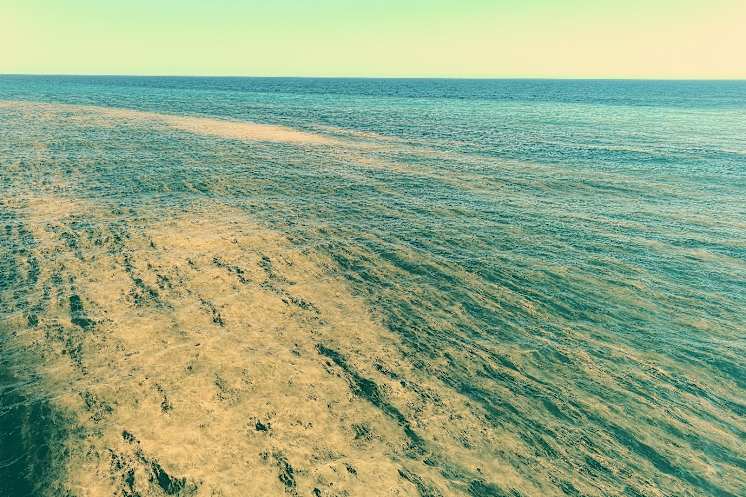In mid-February astute ocean observers may have seen what looked like dirty brown streaks on the ocean surface, some of which easily extended a couple of kilometres in length. At one point I got caught in some while snorkelling off Sandon Point and could hardly see my hand in front of my face.
Hello Fish has covered phytoplankton blooms in the past and their importance for marine ecosystems (October 2020) and one of their key drivers, upwelling of nutrients (February 2022) from deep water. However, what we experienced in March, whilst also a bloom of plankton, had a very different cause and involves a very different type of organism.
The plankton in question was a type of blue-green alga, also known as a cyanobacterium, so called because these organisms are bacteria (not plants) that have the capacity to photosynthesise, just as plants do. The most common species in the waters off the Great Barrier Reef, and likely down here, is Trichodesmium erythraeum. In the Coral Sea it may form blooms that are hundreds of kilometres long.
Unlike phytoplankton which require nitrates (nitrogen-based nutrients) from the water, Trichodesmium can make its own nutrients by processing nitrogen from the air. It grows well in waters where nitrate concentrations are low, which is typical of many tropical areas. In the past few months the sea surface temperature off the central and southern NSW coast has been high as very warm tropical water has moved south, bringing with it rain and, of course, Tropical Cyclone Alfred.
On land there are also plants that can make their own nitrates from the air. Legumes like beans and clover are well known for their ability to ‘fix’ nitrogen from the air and do this via a relationship they have with bacteria living in nodules in the root systems.
Sea sawdust is not common along the NSW coast but does occur in late summer when the nutrient poor, warm water from the tropical north pushes south. It performs an important role in supplying nitrogen based nutrients to the sea as well as being a food source for other planktonic species.
Follow Duncan’s YouTube channel, Illawarra Underwater.

About the writer
Duncan Leadbitter is a director of fisheries and natural resource consulting company, Fish Matter, which advises industry, government and NGOs on the sustainable use of fish. Most of Duncan’s work is based in Asia. He is a Visiting Fellow at the Australian Centre for Ocean Resources and Security at UOW. A keen scuba diver, snorkeller, spearfisherman and photographer, Duncan lives in Stanwell Park.






